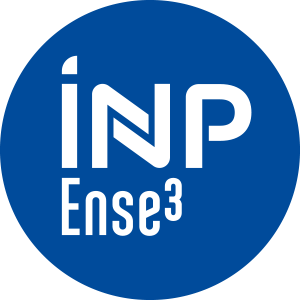Number of hours
- Lectures 40.0
- Projects -
- Tutorials 8.0
- Internship -
- Laboratory works 12.0
ECTS
ECTS 5.0
Goal(s)
This lesson provides the bases of nuclear physics, particle emissions and interaction.
The second goal is to describe the characteristics and the specificities of nuclear energy production in comparison with the others source production - economical aspects are also adressed briefly.
Christophe SAGE
Content(s)
NUCLEAR PHYSICS
=== Nuclear Physics - Fundamentals === A. NUTTIN
I : Notions of relativity and binding energy : main concepts, special relativity, binding energy
II : Models and Properties of the Nucleus : liquid drop model, main nuclear properties, shell model
III : Nuclear Reactions : neutron-induced, cross sections, fission (mechanism and description), fusion
IV : Radioactive Decays : alpha decay, beta and gamma decay, evolution (e.g. production) calculations
=== Nuclear Physics - Particle-Rays Matter Interaction === C. SAGE
I : Introduction, reminders, units
II : Interaction of charged ions with matter
III : Interaction electron – matter
IV : Interaction photon - matter
V : The neutron and its interactions
VI : Interaction between radiation and living matter
=== Physique Nucléaire - Nuclear in the energy mix === N. CAPELLAN
I : Energy context
II : Alternatives to fossil fuel
III : Nuclear power
=== Physique Nucléaire - Nuclear Energy Economics === A. BIDAUD
Simplified economy analysis (discounting and levelized cost of electricity) are introduced and applied to energy economics. They help to discuss the particularities of nuclear energy economics such as the importance of construction costs (and schedule management), or the long term liabilities (waste and dismantling).
classical mechanics, electromagetism, atomic physics, quantum mechanics
Session 1
Final assessment (ET1) :
- Theory, 1 hour written exam (40%)
- MRI, 1 hour written exam (30%)
- Energy, 30 min MCQ (10%)
Continuous assessment (CC1) : lab works (20%)
Session 2
Final exam : new assessment (ET2) to replace session 1 assessment (ET1)
Continous assessment : session 1 assessment (CC1) retained, no resit for CC1
The course exists in the following branches:
- Curriculum - Master's Degree in Engineering IEN - Semester 7
Course ID : 4EUS31NU
Course language(s): 
You can find this course among all other courses.
K. Krane, Introductory Nuclear Physics, John Wiley & sons, 1988
L. Valentin, Physique subatomique - Noyaux et particules (2 tomes), Hermann, 1982
Glenn F. KNOLL, "Radiation Detection and Measurement", John Wiley and Sons Ed., 2010
William R. LEO, "Techniques for Nuclear and Particle Physics Experiments: A How-To Approach", Springer-Verlag, 1994
William D. D’haeseleer, Synthesis on the economics of nuclear energy costs, https://www.mech.kuleuven.be/en/tme/research/energy_environment/Pdf/wpen2013-14.pdf
Cour des comptes, Le coût de production de l’électricité nucléaire actualisation 2014, https://www.ccomptes.fr/fr/publications/le-cout-de-production-de-lelectricite-nucleaire-actualisation-2014
French State controlled diploma conferring a Master's degree




